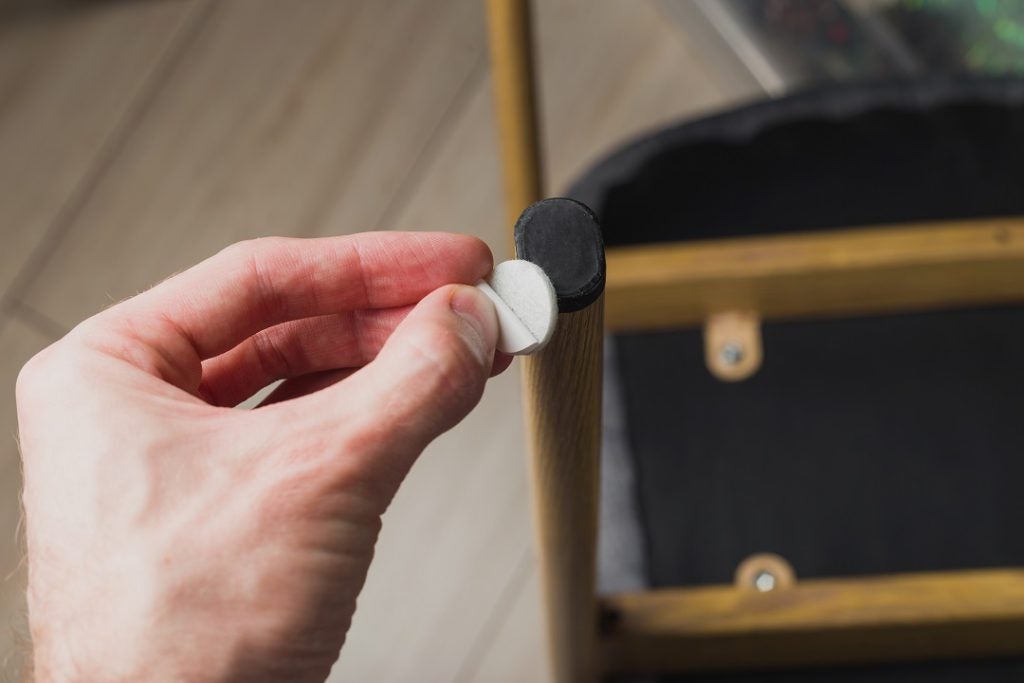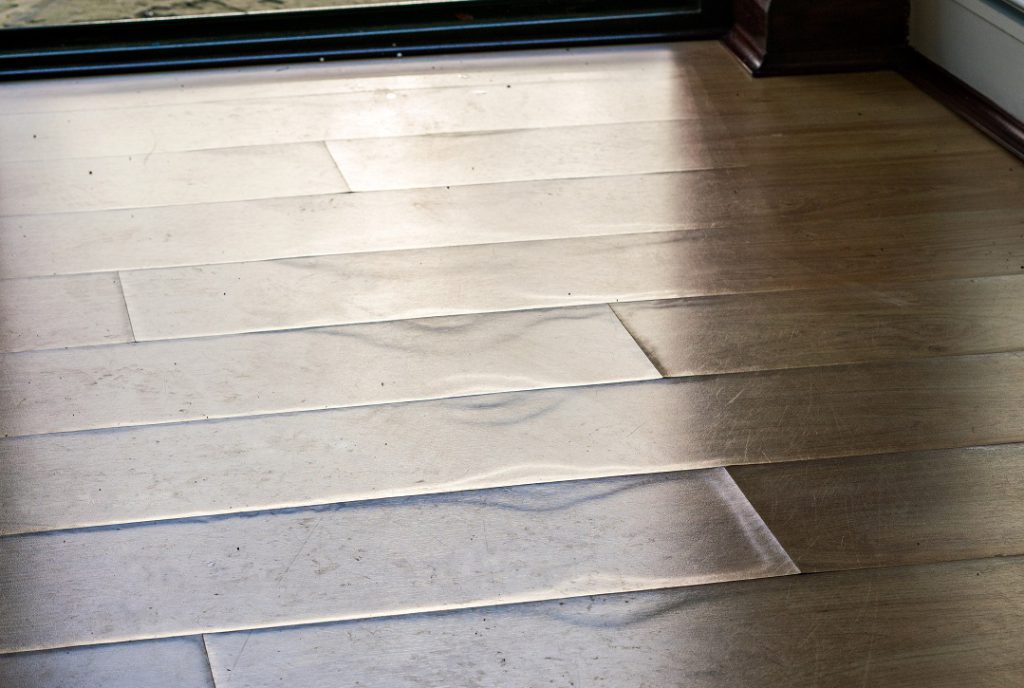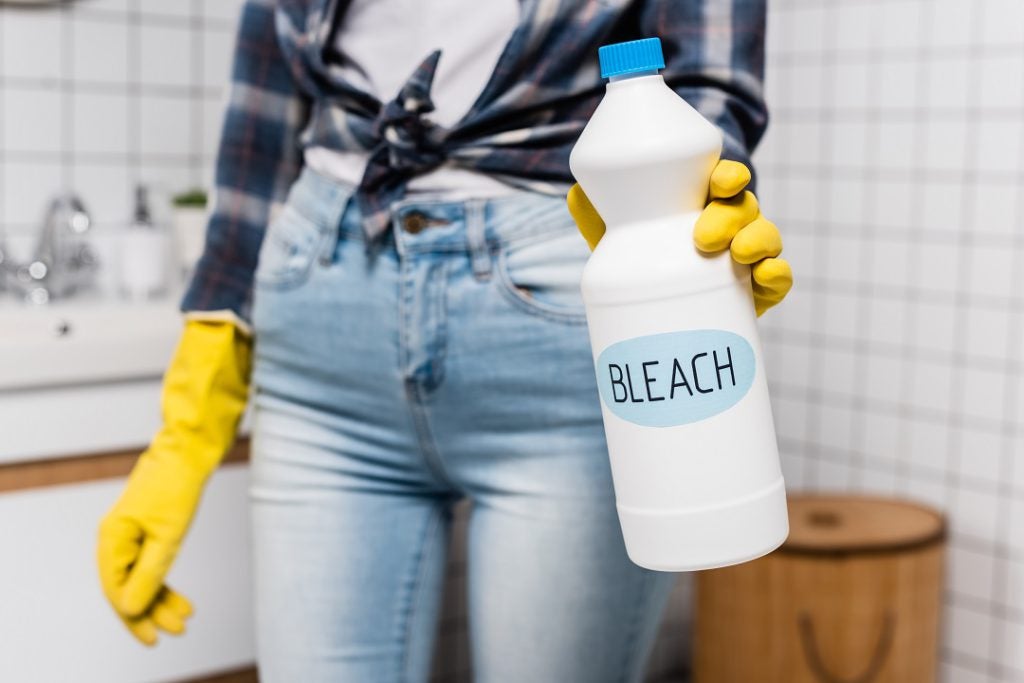New floors are one of the most significant upgrades you can do to your home. If you’ve had flooring installed recently, you’re probably already thinking about all the ways you can keep it looking its best and lasting as long as possible. The good news is that most of today’s floor products are built with durability in mind, and with basic care, the hardwood, laminate, or vinyl flooring you get through Empire Today® should look and feel great for years to come.
However, even more important than knowing the best ways to care for your floor is knowing how not to care for your floor. Because years of proper maintenance can quickly be negated with just a few of the wrong moves. Want to learn about the top things to not do with your new flooring? Here are five ways to quickly ruin your floors.
Using Homemade Cleaning Solutions
The Internet is the greatest repository of knowledge that has ever existed. On it, you can find information on literally anything, from how to perfectly poach an egg to what color shoes look best with your navy suit. However, it’s important to recognize when you’re getting advice from someone who might not really know what they’re talking about—and on the Internet, that can be the case more often than not. While this might not be a big deal when it comes to cooking your breakfast or dressing for your cousin’s wedding (though no matter what the blogs say, you should not wear those sandals with your suit), it can spell catastrophe when it comes to maintaining your floors.
DIY bloggers love to advocate cleaning just about everything with white vinegar. And in many cases, the advice isn’t totally off base. From a clogged bathroom drain to a grease-caked baking pan, there are many things that vinegar excels at cleaning. But your floors shouldn’t be one of them! The acidity in vinegar—the very property that makes it such an effective cleaner in the first place—is strong enough to strip the protective coating off of most vinyl, laminate, and hardwood floors. This can lead to your floors looking extra dull, plus becoming even easier to stain and scratch. In most cases, there’s no fix for the damage besides completely replacing the entire floor.
Even when diluted, cleaning floors with vinegar can still be risky. Now, it’s not a guarantee that vinegar will damage your floors, but it is highly likely that it will. The best and safest way to clean your hard floors is always by choosing a manufacturer-recommended cleaning product or simply using a slightly damp mop.
Not Using Quality Furniture Pads on Chairs and Tables
It’s important to accept that no matter how tough a flooring material you choose and how good its warranty is, if your floors are actually lived on, they will eventually begin to show signs of wear. This can be especially so in busy homes with kids or pets. But while the occasional scuffs that come along with daily traffic might be a fact of life, just a little foresight can prevent many of the big scratches that become eyesores or require costly repairs. One of the best things you can do to protect your new hardwood or laminate floors is to invest in high-quality floor protectors for the legs of the tables and chairs in your home.

Vintage design is experiencing something of a renaissance these days, with mid-ccentury modern furniture leading the charge. While those robust wood chairs and tables look amazing, especially in a room finished with a fine wood floor, old furniture will often have no included floor protection or protection that has since degraded. Before you get comfortable on those vintage dining chairs, make sure they are equipped with heavy-duty felt floor protectors. These pads let your furniture slide freely on hard floors while greatly reducing the likelihood of any scratches.
And, of course, this advice applies to even brand-new furniture. Sticking protective pads onto all of the furniture in your home is a quick and inexpensive way to avoid lots of bigger issues a few years down the road.
Steam Mopping Laminate, Vinyl Plank, or Hardwood Flooring
Steam mops are tools that can work wonders in certain applications, but many users underestimate just how much damage they can do to specific floors. After all, it’s just a bit of water and some heat, right? Yes, but those two elements are not friendly to most flooring types, especially when combined and applied under pressure. Even many waterproof or water-resistant floor products can get damaged by steam mops.
Steam is made up of millions of tiny micro-droplets of water, each much smaller than a typical raindrop or drip from your faucet. In a normal situation, that steam would turn into condensation when it lands on a cool surface like your floor. But because it comes out of the steam mop under pressure, those microscopic droplets can work their way between seams that would be highly resistant to a regular household spill—and even in between the individual layers that make up a plank of wood laminate or vinyl floor. This damage can happen almost instantly, resulting in telltale bubbling around the edges of each individual plank. And it can’t be reversed or repaired, which means entire sections of your floor would need to be replaced. In short: keep the steam mops away from your laminate, wood, or LVP flooring.

Bleach-Based Cleaners
Bleach is yet another powerful cleaning solution that excels at specific tasks, but its very strength is what makes it a hazard when used on many flooring types (you might be noticing a pattern here). Roughly opposite of vinegar on the pH scale, household bleach is a highly alkaline solution, which makes it corrosive to many materials. So, similar to an acidic cleaner like vinegar, using bleach on your hardwood, vinyl, or laminate floors can remove the protective top layer and even weaken the actual flooring material itself.
There is also rarely a good reason to actually need to use bleach when cleaning your hard surface floors. Specialized floor cleaners will be just as effective as getting stubborn stains off of hardwood, laminate, or vinyl flooring, without the risk that bleach carries. And if your goal is disinfecting your floors, there are also safer store-bought options that can achieve the same goal. As always, it’s best to reach out to us at Empire® or the flooring manufacturer to find a recommended cleaning product.

Not Regularly Sweeping
We know how it is when you’re busy. Life can feel overwhelming, and you might look for any opportunity to skip a chore in order to gain some free time. Who among us hasn’t looked at our hardwood or laminate floors, seen the dust bunnies hiding in the corner, and then decided that the floor wasn’t dirty enough to warrant getting out the broom and dustpan? But just because you don’t see any large chunks of dirt or debris strewn across the floor, you shouldn’t skip the regular sweeping. Because oftentimes, it’s the smaller stuff that can be just as damaging as a stray pebble or other big bit of debris.
If you’ve ever swept even when your floors look clean, you’ve probably been surprised by the amount of fine dirt and dust that ends up in a pile. That small pile of dirt might look harmless, but depending on what’s in there, it can be bad news for your floors. Think of it like a piece of sandpaper. Each grain of sand is tiny, but it’s the sheer number of those grains and the application of a little force that makes it an effective tool for quickly removing a layer of wood. The same idea applies to the dirt on your floors—under the soft sole of a shoe or a slipper, it can become surprisingly abrasive. In high-traffic areas of the home, that can eventually add up. Of course, that doesn’t mean you should be sweeping every day. But it’s best for your floors if you do it on a regular basis.
Get the latest updates delivered to your inbox.